Reviews
Nicholas Ray, Andrew Marton, and Guy Green
USA, 1963
Credits
Review by Leo Goldsmith
Posted on 06 September 2008
Source Buena Vista DVD
Categories The Mystic: The Films of Nicholas Ray
Something has come to me in the night, and told me that if I do this film I will never make another.
While Nicholas Ray’s premonition, related to his then-wife Betty, about accepting the job of directing 55 Days at Peking did not prove quite true, the film nonetheless effectively ended his career as a commercial filmmaker. Following King of Kings, Ray was offered the chance (and a lot of money) to do another film with Samuel Bronston’s independent production company, and although Ray later claimed that he hoped this last fat paycheck would give him the freedom to pursue his own projects, it is difficult to imagine a subject more foreign to his sensibilities. A turgid 154-minute quasi-epic about the Boxer Rebellion, the project seemed doomed from the start, and before completion, Ray would suffer a minor heart attack which, while not debilitating, was excuse enough for the producers to fire him from the project and deny him final cut. And what final cut results is dire—part Ray’s failure, part mop-up job by two other directors, with the fingerprints of a meddling and mismanaged production company all over it.
Naturally, as our setting is Peking in 1900, one of the most immediate challenges to the viewer is the film’s obvious racism. The Boxer Rebellion, the film’s historical subject, remains a contentious event - depending on your point of view, it’s either a glorious expression of anti-imperialism or an ill-advised uprising by those who would threaten East-West trade relations - and it’s an ideal subject for a thoughtful work about Western expansion into the Orient. Given our own relations with China today, the subject could hardly be more relevant or interesting; the roots of the Rebellion touch upon various fascinating aspects of Chinese culture, including martial arts (hence the “Boxers” that Westerners so feared) and Feng Shui, which the Chinese believed the Westerners were upsetting with their incursion (and something a good deal more important than the placement of your sofa). But Ray’s film foregoes all such points of interest, trading any such detail-sensitivity for bombast and proto-Bush diplomacy, taking a predictably Occident-friendly stance on the rebellion’s events.
All of Ray’s prior films about occupation and oppression - think They Live by Night, Rebel Without a Cause, and King of Kings - side with those trampled underfoot rather than the combatants, and his explorations of out-of-the-way (or even simply out-of-the-ordinary) cultures and subcultures, like those of rodeo cowboys or Inuits, nearly always display an ethnographic curiosity for difference. 55 Days at Peking, however, shows none of this, though its production history suggests that Ray conducted one of his usual compendious research projects while developing the film and Bronston’s coffers were surely deep enough to accommodate his needs. The film shows no interest in the native culture beyond vaulting ceilings, gaudy chinoiserie, chants of “ee-oo, ee-oo,” leering Western actors with shoddy, slant-eyed makeup jobs, and the occasional oversized Buddha. Rather than a Chinese actor, we have the spindly Robert Helpmann (of Powell and Pressburger’s The Red Shoes and The Tales of Hoffmann) as the creepily stereotypical villain. 1
In lieu of any interest in (or depth for) the Chinese characters, the film follows the stories of three Western characters (and Big Name Stars) as they shore up in the Western Legation during the fifty-five days of the Boxer’s assault: a typically undulant David Niven as Sir Arthur, the British head of the Legation; a typically laconic, tooth-grinding Charlton Heston as Major Matt Lewis, the belligerent American hero; and a typically insouciant Ava Gardner as Baroness Natalie Ivanoff, a sort of high-class Russian prostitute. While Niven swans though the film as he had through so many forgettable international co-productions of the time, effecting a cool demeanor and quipping liberally even in the Boxer melée, Heston swaggers around, costumed like one of Teddy Roosevelt’s Rough Riders and framed like a cowboy, ever ready to pounce on anyone or anything, male or female. (“You’re not in the Wild West now, you know,” Sir Arthur tells him, as if we needed the hint. “You don’t go around shooting down Chinese like you do red Indians.”) Eventually, something female does turn up for Heston to pounce on, and soon Major Lewis and the Baroness begin a protracted and very confusing love-dance that veers from pointlessly antagonistic (with lots of sneering from Heston) to salacious (Baroness: “It’s a very small room.” Lewis: “I’ve been in tight places before.”)
In spite of the obvious allowances one can make for the film as a work of its time or for Ray as the victim of meddlesome producers, the fact remains that few, if any, of the director’s usual dramatic capabilities - his command of his actors or his inventiveness in his blocking - are at all evident in the final product. The intimacy between Major Lewis and the Baroness - the one part of the film where one might expect Ray’s talents to shine - remains all but incomprehensible, and the intrigues of the Chinese Imperial Court and indecision of the Western Legation on how to counteract the Rebellion remain flat and uninvolving, in spite of the fact that they precisely mirror the production’s own problems—respectively, Bronston Productions’ corruption and Ray’s uncertainties as director. Nothing better exemplifies this than Ray’s own cameo in the film as the wizened, wheelchairbound American ambassador, whom Sir Arthur invites to vote with the other Legation members on whether to stand and fight or cut and run. “The United States has no territorial concession in China—never asked for one, don’t want one,” Ray tells Niven. “I’m afraid I have to abstain, Sir Arthur.”
Amongst these various disasters, the film’s one near-marvel is Gardner, by then renowned as a difficult actress and forever marked as a homewrecker for her prolonged and torrid indiscretion with Frank Sinatra. The events of the Baroness’ life closely follow those of Gardner’s own, as followed in the tabloids: just as the Baroness’ affair with a Chinese general (ahh, the allure of the Orient) had caused her husband to kill himself, so too had Gardner’s own dealings with Sinatra prompted the singer to attempt suicide. It’s an odd convergence of life and art, crammed uncomfortably into an already overstuffed turkey, but it reveals Ray’s own sympathy for Gardner’s role and the care they both took in crafting her performance. Sadly, she spends much of the film paired with Heston, who saps all gravitas and logic from their scenes together with his bossy outbursts of masculinity and ridiculous halting speech.
Once Ray’s collapse gave the producers the excuse they needed to eject him from the film entirely, many of Gardner and Heston’s scenes were directed, rather badly, by Guy Green (at the future NRA president’s insistence), while second unit director Andrew Marton took over the rest of the project. It remains unclear exactly how much of the film is attributable to Marton’s direction, although Bernard Eisenschitz, in his book Nicholas Ray: An American Journey, offers some guide, suggesting that Marton jumped in immediately to shoot an early ballroom sequence—in a dreary, leaden manner. More interesting is Marton’s handling of the film’s prologue, a series of sweeping crane shots that take in the many martial bands of the different Western powers, simultaneously playing their different national anthems and creating a muddled cacophony. (This sequence, which Ray later claimed to have devised, is quoted in the beginning of Tsui Hark’s own Boxer Rebellion epic, Once Upon a Time in China, although in that context, the cacophony is created by a mix of traditional Chinese music and Christian hymns). Just as Ray’s cameo epitomizes his (non)involvement in the film, this scene represents the production’s own confusion as much as it does the disparate voices of the Western Legation.
Hearing this din, a Chinese man remarks to his friend: “Different nations saying the same thing at the same time: ‘We want China.’” If only this film’s producers and directors had so uniform a goal.
- To be sure, certain allowances one can be made for a film of 55 Days’ vintage: one can hardly demand a terribly modern sensibility in the treatment of Chinese culture in a film from 1963, especially given contemporary goings-on between Western and Asian nations. And indeed, though one sees the usual number of patently non-Chinese actors portraying locals, the production company apparently did conduct a broad sweep for extras in every Chinese restaurant in Spain, where the film was shot—such is the measure of the film’s commitment to cultural authenticity.↩
More The Mystic: The Films of Nicholas Ray
-
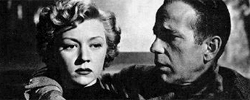
In A Lonely Place
1950 -
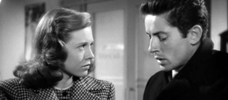
They Live By Night
1948 -
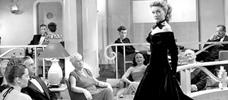
A Woman’s Secret
1949 -
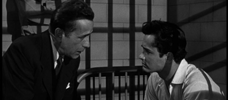
Knock on Any Door
1949 -

Born to Be Bad
1950 -
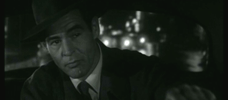
On Dangerous Ground
1952 -
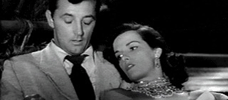
Macao
1952 -
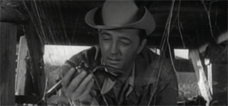
The Lusty Men
1952 -

Johnny Guitar
1954 -
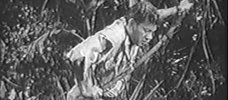
High Green Wall
1954 -

Rebel Without a Cause
1955 -

Bigger Than Life
1956 -

Hot Blood
1956 -

The True Story of Jesse James
1957 -
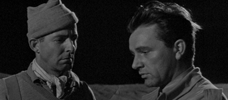
Bitter Victory
1957 -

Party Girl
1958 -

King of Kings
1961 -

55 Days at Peking
1963 -

The Janitor
1974 -

We Can’t Go Home Again
1973-1976 -

Lightning Over Water
1980
We don’t do comments anymore, but you may contact us here or find us on Twitter or Facebook.



